Trees Birds Mammals Fish Amphibians Reptiles
Wild Algarve
Bookshop
Imleria badia (Fr.) Vizzini - Bay Bolete
Phylum: Basidiomycota - Class: Agaricomycetes - Order: Boletales - Family: Boletaceae
Distribution - Taxonomic History - Etymology - Identification - Culinary Notes - Reference Sources
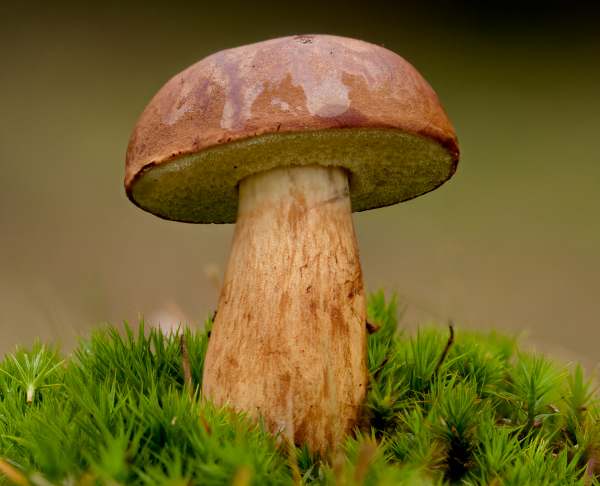
Imleria badia (syn. Boletus badius; Xerocomus badius), the Bay Bolete, is common in
spruce and pine forests and occasionally appears also under oak,
beech and chestnut trees.
Late summer and autumn is the main season for this good edible bolete, which is comparable in flavour with Boletus edulis, the Cep or Penny Bun, and has the advantage of being less frequently infested with maggots, even when the cap has expanded fully.
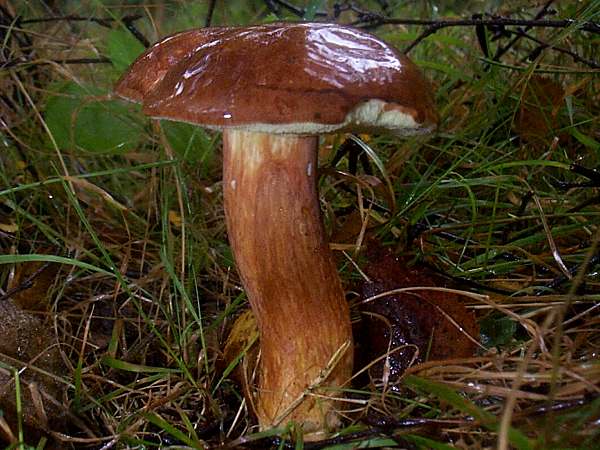
The common name Bay is in no way a reference to a seaside habitat but simply to the colour of the cap of Imleria badia, which is a bay brown (chestnut) colour.
The stem is one of the most obvious defining features of this edible mushroom; it is neither smooth nor reticulate (covered in a net pattern) but lined vertically with shallow brown ridges on a paler background.
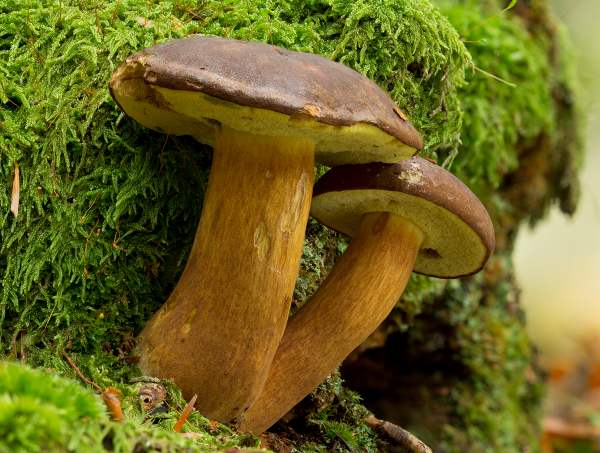
Distribution
A fairly common and widespread species in Britain and Ireland, the Bay Bolete is found throughout temperate parts of Europe and North America.
Although Bay Boletes are common finds, they are not particularly gregarious mushrooms, and it is rare to find more than two or three in a group; however, on occasion I have found groups of up to four or five beneath an aged pine tree.
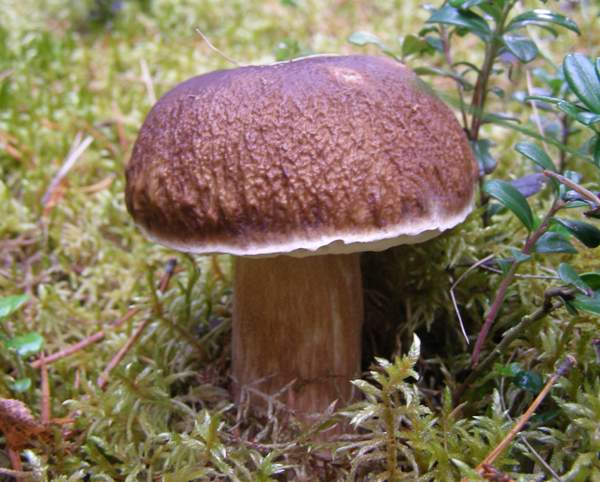
Taxonomic history
The great Swedish mycologist Elias Magnus Fries described and named this mushroom in 1821, giving it the name Boletus badius. In 2014 Italian mycologist Alfredo Vizzini erected the new genus Imleria for this species, based on the uniqueness of some of its morphological features and on DNA analysis reported in 2013.
Synonyms of Imleria badia include Boletus badius (Fr.) Fr., Boletus castaneus ß badius Fr. , Ixocomus badius (Fr.) Quél., and Xerocomus badius (Fr. ) E.-J. Gilbert.
Etymology
The generic name Imleria honours the Belgian mycologist Louis Imler (1900 - 1993); the older genus name Boletus comes from the Greek bolos, meaning lump of clay, while the specific epithet badia means reddish brown (bay brown!).
Identification guide
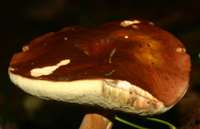 |
Cap
With its large smooth bay-brown or chestnut
coloured cap, Imleria badia is instantly recognisable. When immature,
the caps are slightly downy.
Growing to between 5 and 15cm in diameter, Bay Bolete caps have firm, pale
flesh that turns slightly blue when cut or broken. |
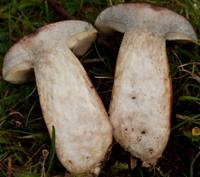 |
Flesh
Cap and stem flesh are whitish or sometimes yellowish when first cut through, turning vinaceous just beneath the cap cuticle and slightly blue in the region directly above the tubes and in the stem apex. |
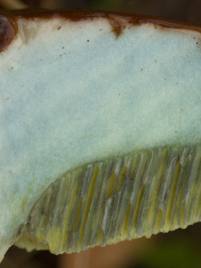 |
Tubes
At first pale yellow but usually turning blue when cut, the tubes of the Bay Bolete spaced at 1 to 2 per mm. |
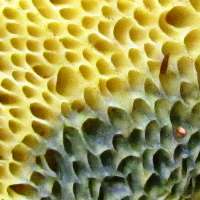 |
Pores
The tubes terminate in
pale-yellow angular pores, which (nearly always) turn blue-green when bruised. The colour change
is sudden and most marked in mature specimens, and if you touch the pores a deep blue stain is
left on your hands. |
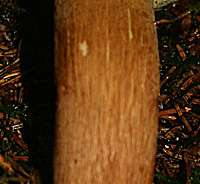
|
Stem
The brown stipe or stem of Imleria badia is covered in fine cottony threads that give it a
streaky appearance. There is no ring, and the stem is more or less even in
diameter, although often slightly curved, most particularly near to the base.
Typically 2 to 3cm in diameter, the stems of this bolete range from 5 to 15cm in height. The flesh inside the
stem is white or pale lemon and turns slightly blue when it is cut. |
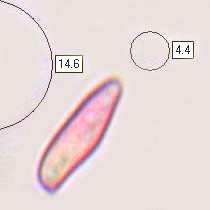 |
Spores
12-15 x 4-5μm, subfusiform.
Spore print
Olivaceous-brown. |
Odour/taste |
Mild tasting; odour not distinctive. |
Habitat & Ecological role |
Ectomycorrhizal, in mixed woodland, Bay Boletes are particularly common under
pines and other conifers but also occur under Beech and many other deciduous broadleaf trees. |
Season |
August to November in Britain and Ireland. |
Similar species |
Boletus edulis, the Cep or Penny Bun Bolete, sometimes has a
bay brown cap, but the reticulate net pattern on its pale stem helps
to distinguish it from the Bay Bolete Imleria badia. |
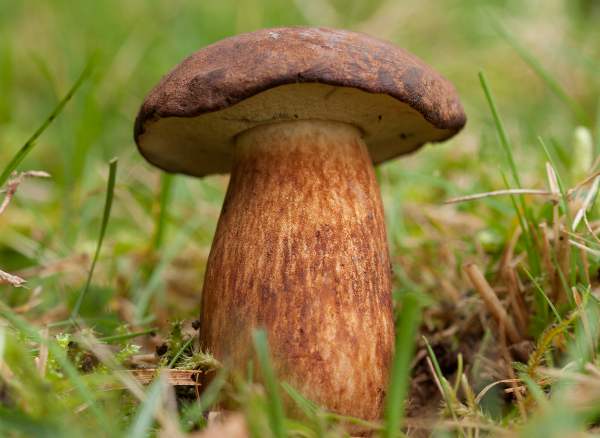
Culinary Notes
One large Bay Bolete makes a splendid meal for two, because these mushrooms are usually big and chunky.
In any recipe that calls for Ceps, Porcini, King Boletes or Penny Bun Boletes (all common names for Boletus edulis) it is perfectly okay to substitute Bay Boletes, and you can be sure that the recipients of the meal will say at least 'not badia'.
We say that they are very good indeed and close to Ceps' excellence on the scale of esculence.
Bay Boletes dry very easily for storage if they are first cut into thin vertical slices; alternatively they can be sliced or chopped into pieces, cooked and then frozen for later use.
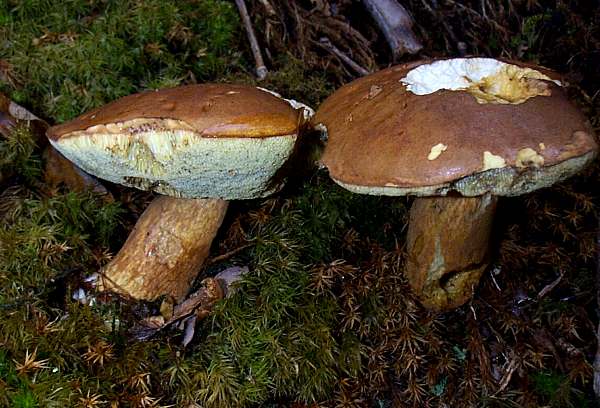
Reference Sources
Fascinated by Fungi, 2nd Edition, Pat O'Reilly 2016, reprinted by Coch-y-bonddu Books in 2022.
British Boletes, with keys to species, Geoffrey Kibby (self published) 3rd Edition 2012
Roy Watling and Alan E Hills. (2005). Boletes and their allies (revised and enlarged edition), - in: Henderson, D.M., Orton, P.D. & Watling, R. [eds]. British Fungus Flora. Agarics and boleti. Vol. 1. Royal Botanic Garden, Edinburgh.
Dictionary of the Fungi; Paul M. Kirk, Paul F. Cannon, David W. Minter and J. A. Stalpers; CABI, 2008
Hills, A.E. 2008. The genus Xerocomus. A personal view, with a key to the British species. Field Mycology 9(3): 77–96.
BMS English Names for Fungi
Taxonomic history and synonym information on these pages is drawn from many sources but in particular from the British Mycological Society's GB Checklist of Fungi.
Acknowledgements
This page includes pictures kindly contributed by David Kelly.
Top of page...
Fascinated by Fungi. Back by popular demand, Pat O'Reilly's best-selling 450-page hardback book is available now. The latest second edition was republished with a sparkling new cover design in September 2022 by Coch-y-Bonddu Books. Full details and copies are available from the publisher's online bookshop...